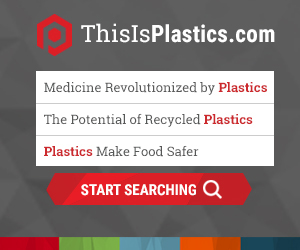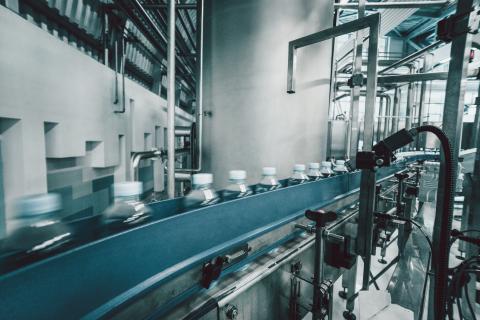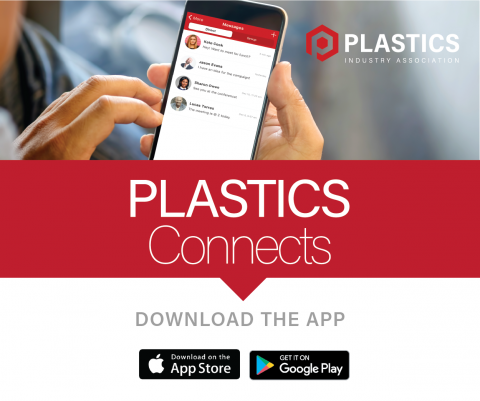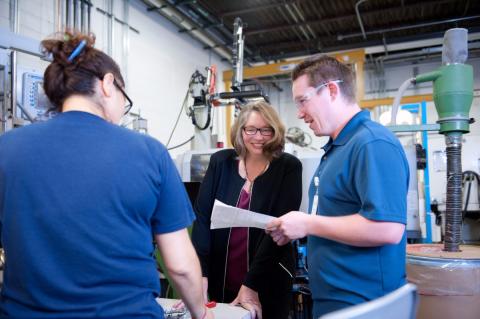Bioplastics
For more information, contact:
Bioplastics are either:
1) made from a renewable resource such as corn or sugar cane (biobased),
2) break down completely via a natural process (biodegradable)
3) are both biobased and biodegradable.
They are used in the same ways as other plastics: packaging, agriculture, medical, automotive parts, 3D printing and more. Biodegradable plastics also reduce the amount of trash that is sent to landfills.
Globally, over 1.7 million metric tons were produced in 2014 and contributed to $4.4 billion and 32,000 jobs in the U.S. Bioplastics are one of the fastest growing sectors of the plastics industry, with an anticipated 20-30% annual growth.
Latest Resources
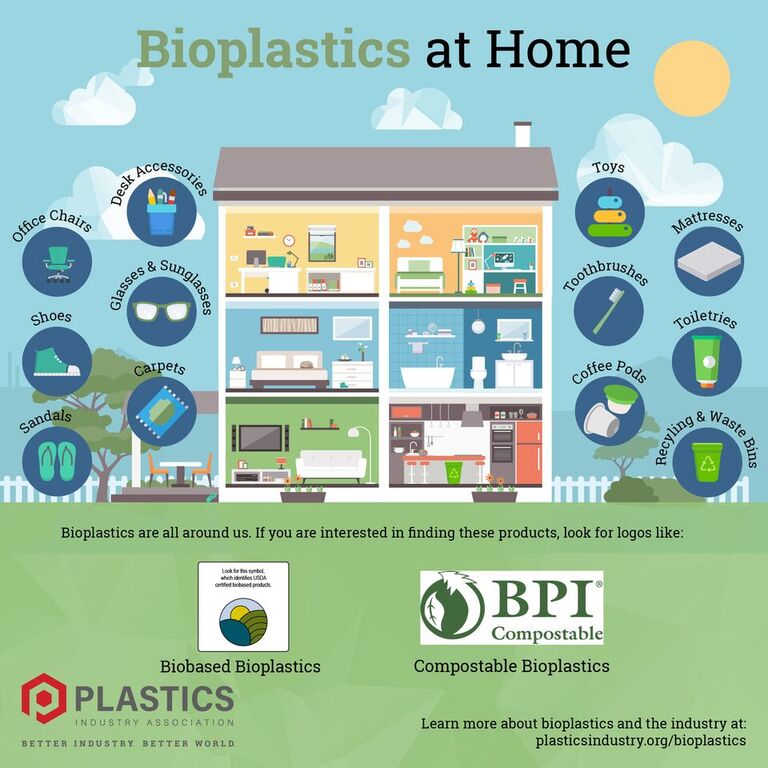
All companies have the responsibility to ensure that environmental claims used in marketing and promotion are truthful and evidence-based, not deceptive or unfair. These recommendations are voluntary
guidelines and general principles for those marketing bioplastics, informed by the Federal Trade Commission (FTC) “Guides for the Use of Environmental Marketing Claims” (Green Guides) and relevant state laws or regulations.
Watching: Bioplastics, Plastics Market Watch
A phase two of the Bioplastics Market Watch Report, Watching: Bioplastics provides valuable updates on the status of bioplastics in the marketplace as well as at research labs around the country. Uncover information on innovation and advancement, market intelligence, consumer perceptions, emerging markets and public policy. Bioplastics are increasingly being used in industry sectors beyond bottling and packaging with many brands discovering their diversity and flexibility. The entire plastics supply chain can benefit from these insights.
Bioplastics: Plastics Market Watch
Bioplastics are plastics that either: originate from a renewable resource, are biodegradable, or are both. As new applications and technologies are developed, bioplastics represent an evolution within the plastics marketplace. Bioplastics are part of the plastics’ growth story that is inspiring brand owners and manufacturers to find new applications and solutions for products.
Industrial Compostability Claims Checklist
The Federal Trade Commission’s Green Guide provides direction to companies making claims about industrial compostability. This guidance document provides a handy checklist and examples about things to consider when putting claims on product packaging.
Bioplastics Simplified: Attributes of Biobased and Biodegradable Plastics
The term “bioplastics” describes a wide range of materials. This paper discusses the growing field of bioplastics and how material innovations can offer environmental advantages.
Position Paper on Degradable Additives
This position paper outlines issues and questions of concern in order to support consumers, retailers and the plastics industry in identifying unsubstantiated and misleading product claims around degradability and biodegradability of plastics.
Additional Information
-
About the Bioplastics Division
The Bioplastics Division of PLASTICS works to promote the development of bioplastics as an integral part of the plastics industry by:
- Educating the plastics industry, federal, state and local governments, and the value chain
- Articulating clear and consistent descriptions of the different bioplastics options
- Providing strategic advice to the plastics industry, federal, state and local governments, and the value chain and promote harmonization of environmental policies
- Establishing itself as the “go to” source for information about the bioplastics industry
-
Biobased Bioplastics
Biobased bioplastics are plastics that can be made from a renewable resource. Examples of some biobased bioplastics feedstocks can be found on the following infographic.
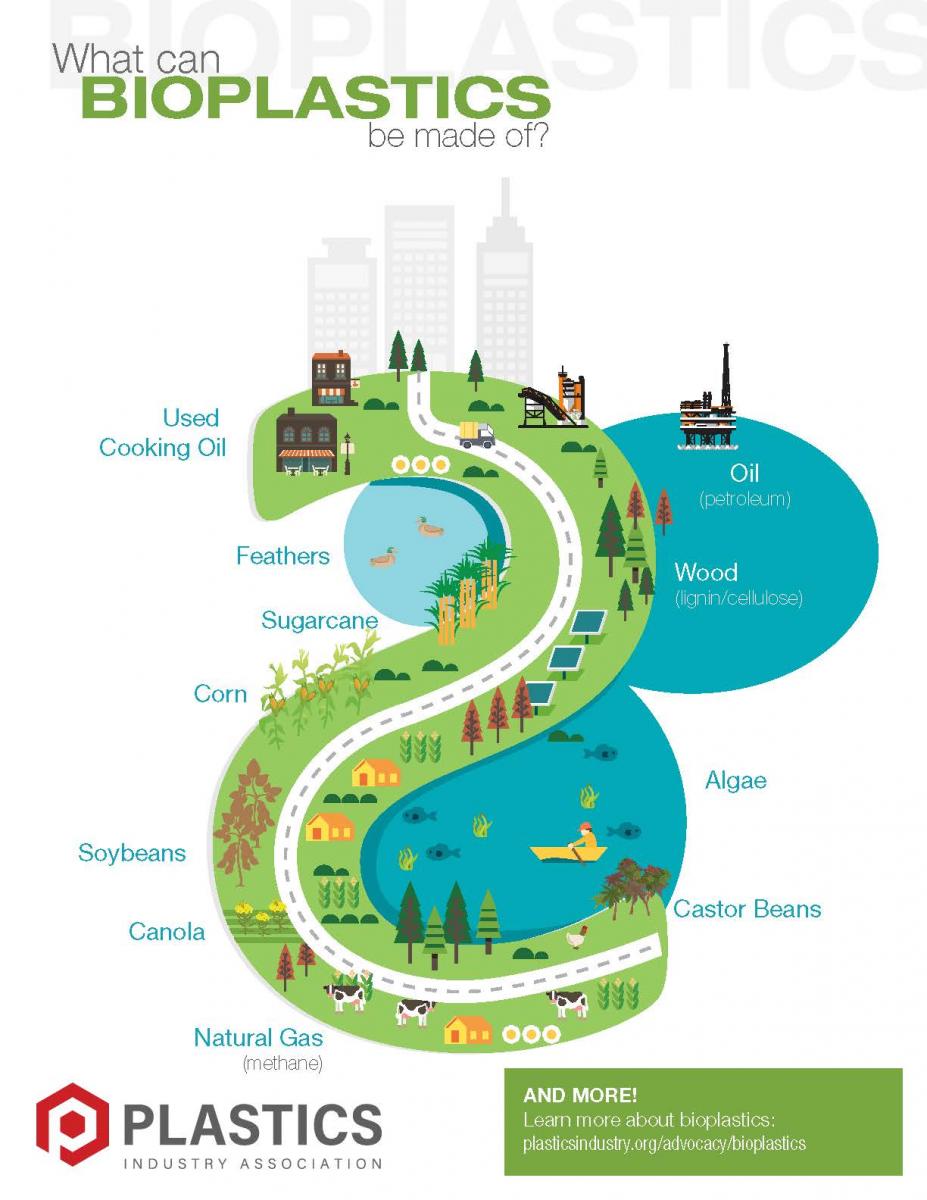
- What can bioplastics be made of infographic [English] [Spanish]
- Understanding Biobased Carbon Content
- Life Cycle Analysis Primer: What, Why and How
-
Biodegradable Bioplastics
Biodegradable bioplastics are plastics that will be consumed completely with the assistance of microorganisms and converted into natural products, such as biomass, water, and carbon dioxide. There are different ways to be biodegradable, with the most common being industrial composting.
-
Innovation in Bioplastics Award
Begun in 2013, the Innovation in Bioplastics Award is presented annually by the PLASTICS Bioplastics Division to recognize outstanding innovations and to celebrate the unique and creative applications of bioplastics materials, products, or processes by a company. Entries are judged on innovation, sustainability and impact on the marketplace.
-
Bioplastics Week
Bioplastics Week
Bioplastics Week (BW) is a social media driven campaign created to increase visibility for bioplastics; the week also serves as an opportunity to educate consumers and industry about bioplastics. BW focuses on digital conversations that feature social media posts, infographics and blog posts related to bioplastics.
-
Additional Links
